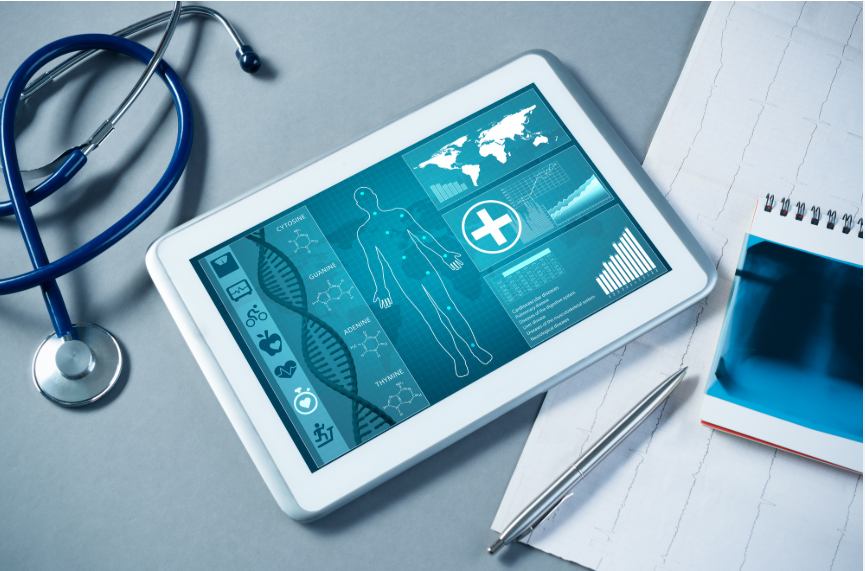In the ever-evolving world of healthcare, technology has become a driving force behind transformative changes. From improving patient care to streamlining administrative tasks, technology has revolutionized the medical field. Innovations like telemedicine, artificial intelligence (AI), and robotics are reshaping healthcare, making it more efficient, accessible, and personalized.
In this article, we will delve into the role of technology in modern healthcare, focusing on the most significant innovations and trends shaping the industry. We will explore how these advancements are improving the quality of care, increasing efficiency, and addressing challenges in the healthcare system.
1. The Integration of Telemedicine: Bridging the Gap in Healthcare Access
Telemedicine has revolutionized healthcare delivery, particularly for patients in remote areas or those with mobility issues. By allowing patients to consult with doctors via video calls, messaging, or even virtual monitoring, telemedicine has enhanced accessibility, reduced waiting times, and minimized the need for physical visits.
Benefits of Telemedicine
- Increased accessibility for patients in rural or underserved areas.
- Convenience for patients with chronic conditions or mobility issues.
- Cost-effectiveness by reducing the need for hospital visits.
Challenges of Telemedicine
- Limited by technology infrastructure in some regions.
- The need for proper training and equipment for healthcare professionals and patients.
- Regulatory issues concerning patient privacy and data security.
Despite these challenges, telemedicine has proven to be a game-changer in delivering high-quality care in a more convenient and timely manner.
See also: How Cloud Computing is Changing the Business Landscape
2. Artificial Intelligence in Diagnostics and Decision-Making
AI has made a significant impact in the field of diagnostics, helping medical professionals analyze complex data and make more accurate decisions. Machine learning algorithms are now capable of interpreting medical images, analyzing patient data, and predicting health outcomes with a high degree of accuracy.
Applications of AI in Healthcare
- Image recognition: AI algorithms can detect diseases such as cancer or heart conditions in medical images with remarkable precision.
- Predictive analytics: AI tools analyze patient data to predict the likelihood of diseases, allowing for early intervention and personalized care.
- Decision support: AI systems assist doctors in making more informed decisions, ensuring better diagnosis and treatment options.
Challenges with AI in Healthcare
- Concerns about AI’s reliability and transparency.
- Ethical considerations regarding AI’s role in decision-making.
- Integration with existing healthcare systems and the need for data standardization.
Despite these challenges, AI holds the potential to greatly improve patient outcomes and enhance the efficiency of healthcare delivery.
3. Robotics and Automation in Surgery
Robotic surgery has made significant strides in recent years, allowing for minimally invasive procedures that are more precise, less risky, and require shorter recovery times. Robotic-assisted surgeries, such as those performed with the da Vinci Surgical System, have gained popularity due to their ability to offer better precision and control compared to traditional methods.
Advantages of Robotic Surgery
- Minimal invasiveness leads to smaller incisions, reducing the risk of infections and promoting faster recovery.
- Enhanced precision allows for more complex surgeries to be performed with greater accuracy.
- Reduced human error as robotic systems provide consistency and accuracy throughout the procedure.
While robotic surgery offers many benefits, it requires highly specialized training and can be costly, limiting its accessibility in some healthcare settings.
4. Electronic Health Records (EHR): Streamlining Patient Data Management
The transition from paper-based records to electronic health records (EHR) has improved the efficiency and accuracy of patient data management. EHR systems allow healthcare providers to quickly access patient information, track medical history, and coordinate care across different providers.
Benefits of EHRs
- Improved accuracy in recording patient data and reducing errors.
- Better communication between healthcare providers, ensuring continuity of care.
- Faster access to patient data, improving treatment decisions and reducing waiting times.
However, there are challenges, such as interoperability issues between different EHR systems and concerns over patient privacy and data security.
5. Personalized Medicine: Tailoring Treatment to the Individual
One of the most exciting trends in modern healthcare is personalized medicine, where treatments and medical decisions are tailored to an individual’s genetic makeup, lifestyle, and environmental factors. Advancements in genomics and biotechnology are making this possible, enabling doctors to provide treatments that are more effective and have fewer side effects.
How Personalized Medicine Works
- Genomic testing helps identify genetic markers that may influence a patient’s response to certain medications or treatments.
- Targeted therapies are designed to treat specific genetic mutations in diseases like cancer.
- Customized treatments are based on the patient’s unique genetic profile and medical history.
Personalized medicine is expected to revolutionize the treatment of many diseases, particularly cancer, by providing more effective and less toxic therapies.
6. The Rise of Wearable Health Devices: Empowering Patients to Take Control
Wearable health devices, such as fitness trackers, smartwatches, and medical-grade monitoring tools, have become increasingly popular for tracking health metrics like heart rate, blood pressure, and sleep patterns. These devices provide real-time data that can help individuals manage their health proactively and detect potential issues early.
Benefits of Wearables in Healthcare
- Continuous monitoring: Wearables allow for real-time health data collection, helping patients and doctors track progress.
- Preventative care: Early detection of health changes can lead to quicker intervention and better health outcomes.
- Empowering patients: Wearables give patients more control over their health and provide them with valuable insights.
While wearables have made health management more accessible, their effectiveness depends on data accuracy and the integration of the information into the broader healthcare system.
7. Blockchain Technology in Healthcare: Ensuring Data Security and Privacy
Blockchain technology has the potential to enhance data security and privacy in healthcare. By providing an immutable ledger for patient data, blockchain ensures that sensitive information is stored securely and is accessible only to authorized parties.
Applications of Blockchain in Healthcare
- Data privacy: Blockchain can provide a secure and transparent method for managing patient data, ensuring it is only accessible by authorized healthcare providers.
- Interoperability: Blockchain can enable different healthcare providers to share data securely, improving collaboration and care coordination.
- Supply chain management: Blockchain can track medical supplies and pharmaceuticals, ensuring authenticity and reducing the risk of fraud.
While the technology shows great promise, its adoption in healthcare is still in its early stages, and regulatory hurdles must be overcome.
8. Virtual Reality (VR) and Augmented Reality (AR) in Medical Training and Patient Care
Virtual reality (VR) and augmented reality (AR) are making waves in medical training, rehabilitation, and patient care. These immersive technologies allow medical professionals to simulate surgeries, practice procedures, and visualize complex medical conditions in 3D, improving learning and treatment outcomes.
Applications of VR and AR in Healthcare
- Medical training: VR and AR can simulate surgeries and medical procedures, allowing students and doctors to practice without risk to patients.
- Pain management: VR has been used in pain management, helping patients cope with chronic pain through immersive experiences.
- Rehabilitation: AR can assist in physical therapy by guiding patients through exercises and tracking their progress.
As VR and AR technologies evolve, they are expected to play an increasingly significant role in both healthcare education and patient care.
9. The Impact of 3D Printing in Healthcare
3D printing is revolutionizing healthcare by enabling the creation of custom prosthetics, implants, and even human tissues. This technology allows for the precise fabrication of medical devices and tools, tailored to an individual’s unique needs.
Uses of 3D Printing in Healthcare
- Custom prosthetics: 3D printing allows for the production of highly personalized prosthetic limbs and devices.
- Medical implants: Surgeons can use 3D-printed implants that are specifically designed to fit a patient’s anatomy.
- Tissue engineering: Researchers are working on 3D printing human tissues for transplant, although this is still in the experimental stages.
Despite its potential, 3D printing in healthcare is still developing, with challenges related to regulation and the high costs associated with the technology.
10. The Future of Healthcare: AI, Robotics, and Personalized Care
Looking ahead, the future of healthcare will be shaped by the continued advancement of AI, robotics, and personalized medicine. As these technologies become more integrated into everyday healthcare practices, we can expect improvements in diagnosis, treatment, and overall patient outcomes.
The Future Trends
- Increased adoption of AI and machine learning in diagnostics and patient care.
- Robotics in surgery and rehabilitation, making procedures safer and more efficient.
- Wider implementation of personalized medicine, offering treatments tailored to the individual.
The integration of these technologies promises to make healthcare more efficient, accessible, and patient-centered.
Frequently Asked Questions (FAQs)
1. How has technology improved patient care?
Technology has improved patient care by enabling faster and more accurate diagnoses, streamlining communication between healthcare providers, and allowing for more personalized treatments.
2. What are the most significant trends in healthcare technology?
Key trends include telemedicine, AI-driven diagnostics, robotic surgery, wearable health devices, and personalized medicine.
3. Is telemedicine effective in providing quality care?
Yes, telemedicine has proven effective in offering high-quality care, particularly for routine consultations and monitoring patients with chronic conditions.
4. What is personalized medicine?
Personalized medicine involves tailoring healthcare treatments based on an individual’s genetic makeup, lifestyle, and environmental factors for better outcomes.
5. How does AI improve medical diagnostics?
AI improves diagnostics by analyzing medical data and images with greater precision, identifying patterns that may be missed by human doctors.
6. Will robots replace doctors in the future?
Robots will not replace doctors but will assist in surgeries and procedures, enhancing precision and reducing human error.




